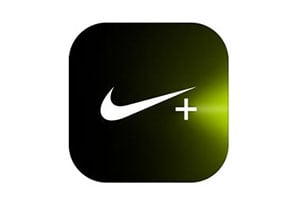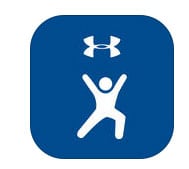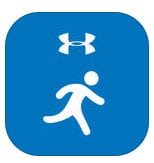 Fitness brands are in the midst of a major transformation into lifestyle brands as they look to build loyalty and set themselves apart. They are not only providing the right gear to get in shape and participate in sports but are also motivating consumers to become more active.
Fitness brands are in the midst of a major transformation into lifestyle brands as they look to build loyalty and set themselves apart. They are not only providing the right gear to get in shape and participate in sports but are also motivating consumers to become more active.
The veteran in this regard is Nike, which has been telling consumers for years to “Just Do It” in all of its marketing and branding. It also seeks to connect with consumers through storytelling, innovation and emotion.
Mark Parker, CEO of Nike, said during a fourth quarter earnings call that creating an emotional connection through a product doesn’t just happen by accident, but rather through a steady flow of investment, inspiration and talent.
Parker said consumers are building an affinity for Nike because the brand represents authenticity and thoughtful storytelling.
“The rise in sports culture is bringing fitness and style together,” said Parker. “We are growing the business across the entire lifestyle of sports, from performance to sportswear.”
Robert Passikoff, founder and CEO of customer loyalty engagement research consulting firm Brand Keys, Inc., said Nike is the leader in lifestyle branding and deserves to be from a size perspective. He said its “Just Do It” slogan came at a time when people were realizing they needed to exercise and engage in sports.
“This is consistent years of advertising — you don’t get that overnight,” said Passikoff. “Something that Nike introduced was a desire for customization.”
Passikoff said whenever you create an emotional bond, and you’re leveraging an emotional value that people are going to engage with, you are always going to do lifestyle branding well, and Nike did.
Jeannie Walters, CEO of customer experience consulting firm 360 Connext, said with the growing popularity of wearable technology and apps, smart companies are connecting their brands and products with these tools people are already using.
“Nike was a pioneer in this, with both their Nike+ and Nike Fuelband fitness trackers. They are still the leader here, introducing more personalized experiences by connecting their customers with coaches,” said Walters.
Parker said in a second quarter 2015 earnings call that Nike+ allows the brand to create an ecosystem that gives athletes access to their fitness history, training programs and their favorite gear every time they connect with the brand.
“We started on this journey 10 years ago with Nike+ and we have continued to evolve the digital experience for consumers through multiple sports in the world’s most important markets in both men’s and women’s,” said Parker.
Walters said Nike’s apps and digital experiences offer more enriched physical experiences including live events for runners connected through the digital community and apps.
Other brands like adidas, Reebok, New Balance and Under Armour have joined the trend toward becoming lifestyle brands.
Being a Differentiator as a Fitness Brand
Establishing differentiation is important in a crowded field like fitness brands. They’re all trying to not only promote their products, but also be associated with the fitness lifestyle and culture.
Passikoff said the only way a brand can build loyalty is by meeting consumer expectations better than the competition.
“Unless you have something that is so extraordinarily leading edge in terms of what you are offering up, what it comes to a product,” said Passikoff.
He said for example the fact that New Balance is manufactured in the U.S. is a big differentiator and also an emotional one for a brand today.
“Most consumers if you ask them would say, ‘I prefer something made in the U.S.,’” Passikoff said. “Every single consumer that has bought any sports-related fitness clothing has said everything comes from China at one point or another.”
“Ultimately you need to stand for something in the mind of a consumer that is emotional and resonating,” said Passikoff. “If you don’t, you’re just a placeholder in the category.”
 Walters said Under Armour is building brand loyalty by making a big play with apps. Under Armour has acquired several popular fitness apps, including MyFitnessPal and MapMyRun.
Walters said Under Armour is building brand loyalty by making a big play with apps. Under Armour has acquired several popular fitness apps, including MyFitnessPal and MapMyRun.
“Not only do they help these users get fit, but they subtly reinforce Under Armour as the brand to help you do so,” said Walters.
MyFitnessPal has more than 140 million registered users tracking their steps, sleep cycles and daily nutrition. It is a free service that provides data and visibility into workout habits, product preferences and buying history.
Under Armour is able to monetize this data by delivering products faster and optimizing the supply chain to meet customer demand. This could be through providing accurately stocked store shelves, or reminding a runner their shoes might need replacement . It allows Under Armour to transform and manage its business in real time.
Walters said Reebok is on the rise in its results as they make more of a play for the everyday athlete. Their ads, CrossFit sponsorships and even product selection are aimed at regular people getting more fit every day.
“They don’t have the connection to apps like the other brands, but I wouldn’t be surprised to see that in the near future,” said Walters.
Hayley Silver, vice president of insights of ecommerce and consumer analytics company, Bizrate Insights, said with fitness brands today she sees a lot of interconnectedness with how consumers are evaluating the retailers in their survey.
She said while the expectation starts with the product and customer experience, it is clearly extending beyond to brand association and elevation to the overall picture.
Silver said brands are extending beyond the product and purchase experience to customer support and the usage experience, keying into how the customer lives and uses the product.
For their part, consumers are looking at brands to see what they can you do for them and how they fit into their lifestyle.
In 2013, Reebok evolved and improved its digital capabilities by introducing the fitness digital instructor platform ReebokONE, and a highly intuitive fitness app that allows customers to customize their workouts.
Fitness Brands and Social Media
Social media is one of the biggest ways to build brand loyalty with consumers. Fitness brands are engaging their fans with fitness videos and user-generated content to not only sell product but motivate and inspire people to get up and move.
Silver said social media is so much in front of consumers, through sponsored posts and what friends share, that people are able to insert what they are doing and what they are proud of when it comes to achieving fitness goals.
“I think as a society, as we become more aware, we are able to inspire each other [through] our wins and it becomes top of mind,” said Silver. “You start to inspire and everyone becomes a source of inspiration, not just the professionals and Olympians. We can all be a source of inspiration for each other.”
Walters said many of these fitness apps use social connections as part of the experience. Users can map and post mileage from their latest run or compete with friends on step counts per day.
“People love to share the tools that help them, including fun footwear or their favorite running tights,” said Walters. “Instagram and Snapchat are full of photos of treadmill displays to show off a workout or shoes on the pavement.”
Walters added that the best brands leverage this with invitations to share using hashtags associated with their brands.
For example, Under Armour asked its fans on Facebook to share their most intense run on Instagram and Twitter using its hashtag #UAContest for a chance to win a trip to UA Run Camp.
“People are enthusiastically sharing their love for brands and products and it’s all about how it helps them achieve their goals,” said Silver. “It’s often about how comfortable it is, and how you stand behind your product. When you look at the videos, it is about showing pride, inspiring others.”
How Fitness Brands Build Brand Loyalty Moving Forward
Finding new and unique ways to not only sell product but to also be a place where consumers can turn to for fitness lifestyle choices will continue to be the goal for many fitness brands. As more people become health conscious and aware that exercise and good health should be a way of life, brands will continue to find ways to cater to their wants and needs.
Whether through mobile device or social or email marketing, brands will continue to inspire a better lifestyle.
Silver said in today’s retail space, “omnichannel” is the buzzword, which for her means providing the same customer experience across all devices and channels. But customers aren’t thinking of it as one channel over the other; all they care about is finding products when, where and how they want them.
“I think fitness brands are taking the lead in this holistic approach,” said Silver. “They don’t compartmentalize by saying they only sell X, and it’s all they focus on. They connect with all the different parts of the consumer’s fitness and lifestyle.”
Silver said fitness brands have experts, recommendations that track where you’ve been on a run or a kayak trip. Having these types of resources is not something she sees in other categories.
Walters said going forward fitness brands can build brand loyalty by connecting with a specific type of athlete, providing tracking mechanisms that are tied to loyalty rewards.
“There are several standalone apps that reward activity tracked through FitBit or other fitness trackers,” said Walters. “It seems this is the opportunity for retailers to say, ‘lets us connect with your tracker and earn rewards, discounts or invitations to special events.’”
Daniela Forte is Multichannel Merchant’s Content Manager.
This article was originally published in 2016 and is frequently updated
